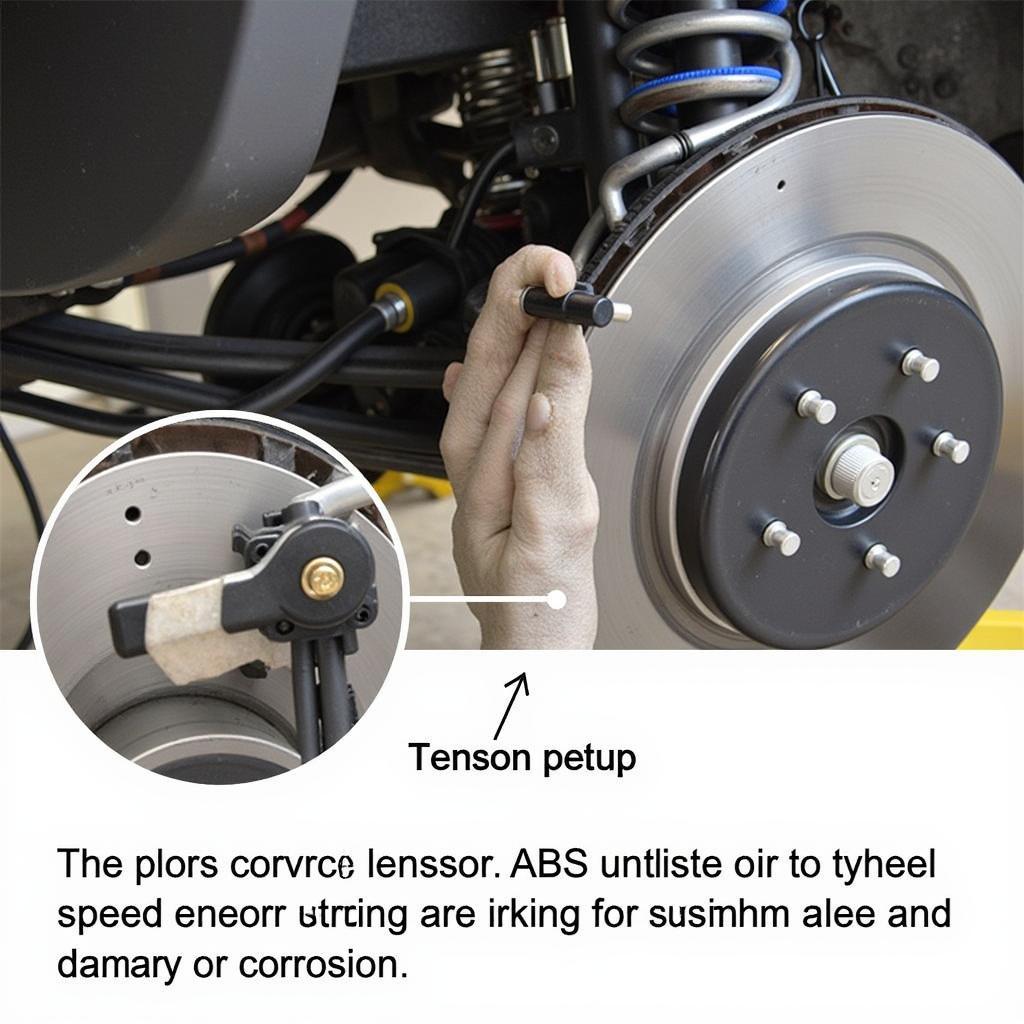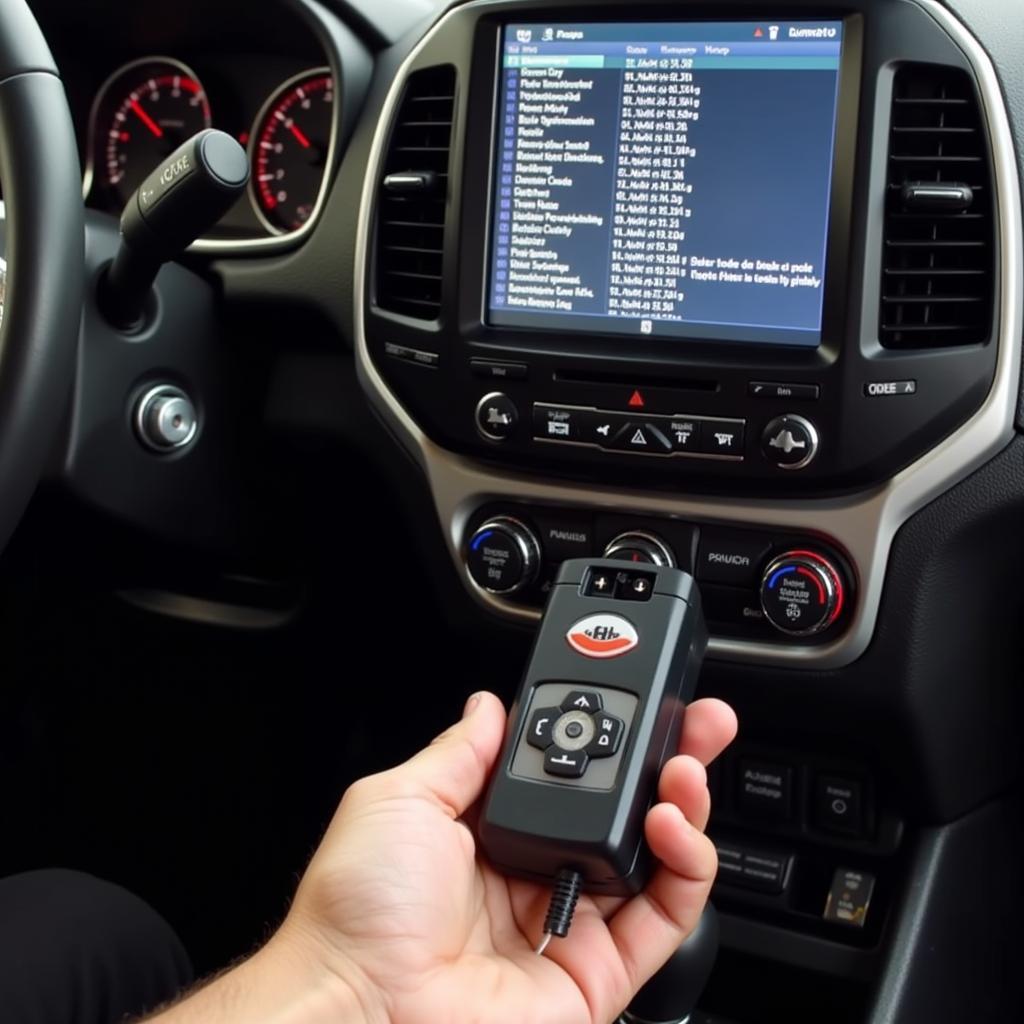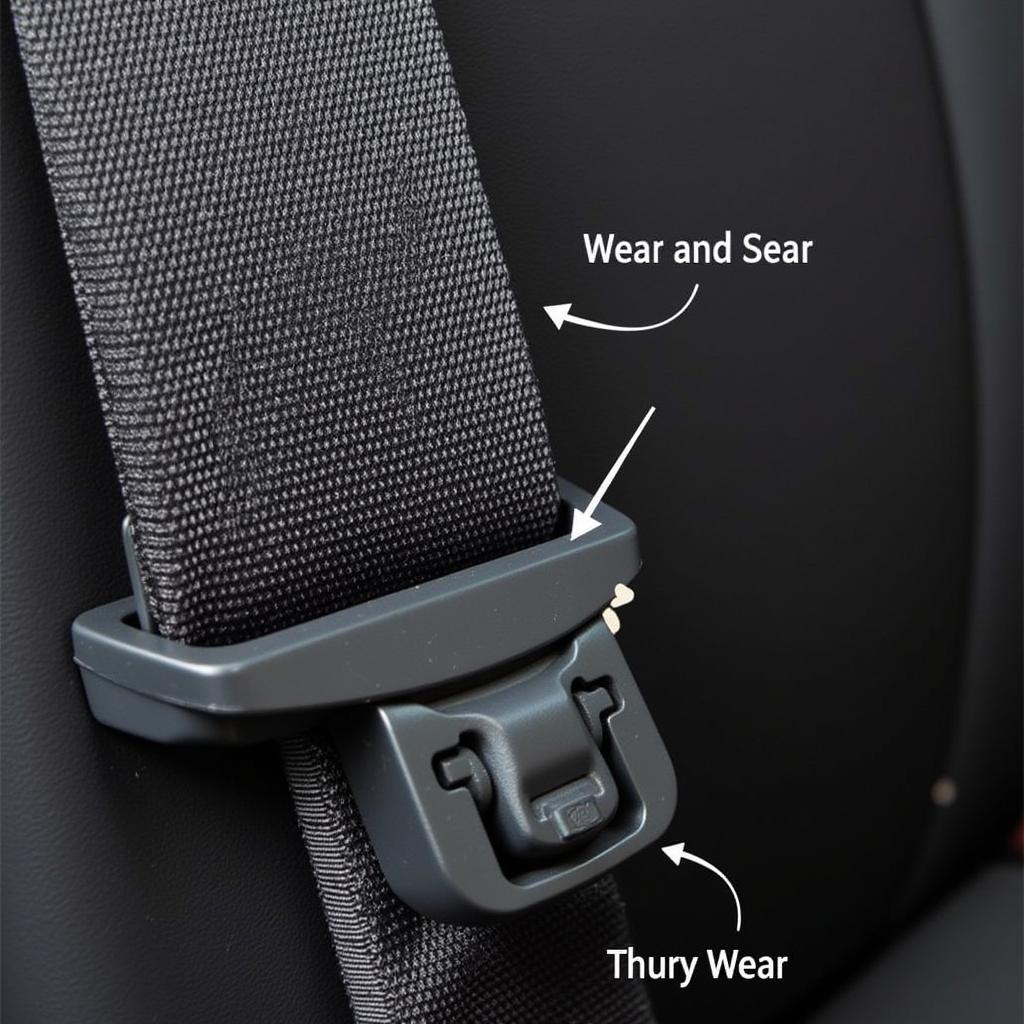The Jeep Compass brake warning light can be a jarring sight, signaling potential issues with your braking system. Understanding what triggers this light and how to address the underlying problem is crucial for safe driving. This guide will help you troubleshoot and fix your Jeep Compass brake warning light, covering everything from simple checks to more complex diagnostic procedures.
Understanding the Jeep Compass Brake Warning Light
The brake warning light, often a red exclamation point within a circle or parentheses, serves as a general indicator of brake system problems. 2007 jeep compass brake warning light While it can illuminate for various reasons, it always warrants immediate attention. Ignoring this warning could lead to compromised braking performance, putting you and others at risk.
Several factors can trigger the brake warning light, ranging from low brake fluid levels to more serious issues like a malfunctioning ABS system or worn brake pads. Quickly diagnosing the root cause is essential for efficient repairs.
Common Causes of the Brake Warning Light
Low Brake Fluid
One of the most common culprits is low brake fluid. Brake fluid is essential for transferring hydraulic pressure from the brake pedal to the brakes, enabling your vehicle to stop. A leak in the brake lines or worn brake pads can cause the fluid level to drop, triggering the warning light.
Parking Brake Engaged
Sometimes, the simplest explanation is the correct one. If the parking brake is engaged, even slightly, the warning light may illuminate. Always check if the parking brake is fully released before troubleshooting further.
Faulty Brake Sensor
Modern vehicles often employ sensors to monitor brake components. A faulty sensor can send incorrect signals, causing the brake warning light to come on even if there’s no actual problem with the braking system.
ABS Issues
The Anti-lock Braking System (ABS) prevents wheel lockup during hard braking, maintaining steering control. A malfunctioning ABS module or sensor can trigger the warning light. However, it’s important to note that some vehicles have a separate warning light specifically for ABS problems.
Worn Brake Pads
Worn brake pads are a serious safety concern. As the pads wear down, they reach a point where a sensor triggers the warning light, signaling the need for replacement.
Diagnosing the Problem
Checking Brake Fluid
Begin by checking the brake fluid level in the reservoir. If it’s low, top it off with the correct type of fluid specified in your owner’s manual. If the fluid level drops rapidly again, you likely have a leak requiring professional attention.
Inspecting Brake Pads
Visually inspect your brake pads through the wheel spokes. Look for thin pads or uneven wear. If you’re unsure, consult a mechanic for a professional assessment.
Scanning for Codes
Using a diagnostic scanner, you can retrieve trouble codes from your vehicle’s computer. These codes provide valuable insights into the specific problem affecting your brake system.
“Regular brake system inspections are essential for preventative maintenance and safe driving,” advises John Smith, Senior Automotive Technician at Smith Auto Repair. “Don’t wait for the warning light to come on before addressing potential issues.”
 Inspecting ABS Sensor on Jeep Compass
Inspecting ABS Sensor on Jeep Compass
How Can Remote Diagnostics Help?
Remote diagnostics and software solutions are increasingly valuable in addressing brake warning light issues. Skilled technicians can access vehicle data remotely, analyze diagnostic codes, and potentially identify the root cause without physical inspection. This can save time and money, particularly for software-related glitches. In some cases, remote programming and software updates can address the problem entirely without a trip to the mechanic.
What if the Light Stays On?
If the brake warning light persists after addressing common issues like low fluid or engaged parking brake, further diagnosis is necessary. Contact a qualified mechanic to pinpoint and resolve the problem. Ignoring the warning light could lead to brake failure, jeopardizing your safety.
 Performing a Diagnostic Scan on a Jeep Compass
Performing a Diagnostic Scan on a Jeep Compass
Conclusion
The Jeep Compass brake warning light demands immediate attention. While low brake fluid or an engaged parking brake can be simple fixes, more complex issues require professional expertise. By understanding the potential causes and utilizing available diagnostic tools, including remote services, you can ensure a safe and reliable braking system for your Jeep Compass. Remember, prompt attention to this warning light can prevent costly repairs and ensure your safety on the road.
“Addressing brake issues proactively can significantly extend the life of your braking system and prevent more serious problems down the line,” adds Jane Doe, Certified Automotive Specialist at Doe Automotive Solutions.
FAQ
- What does the Jeep Compass brake warning light mean? It signals a potential problem with your braking system, ranging from low brake fluid to more serious issues.
- Should I drive with the brake warning light on? No, it’s unsafe. Get the issue diagnosed and resolved promptly.
- Can I check my brake pads myself? Yes, visually inspect them through the wheel spokes for wear.
- What is remote diagnostics? A technique where technicians remotely access vehicle data to diagnose problems.
- How can I fix low brake fluid? Top it off with the correct type, but if the level drops quickly, suspect a leak and seek professional help.
- What should I do if the light stays on after checking the fluid and parking brake? Consult a qualified mechanic for further diagnosis.
- Can remote programming fix brake warning light issues? In some cases, yes, particularly for software-related problems.

